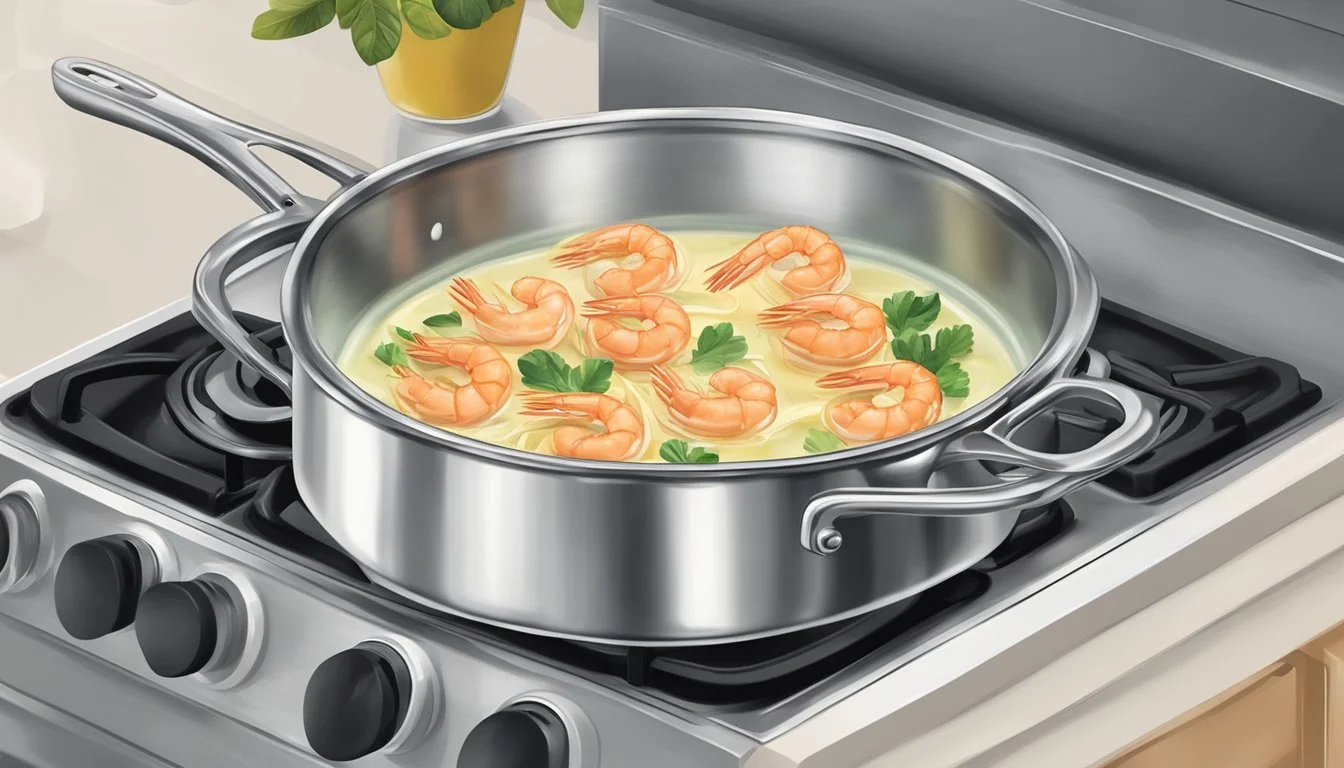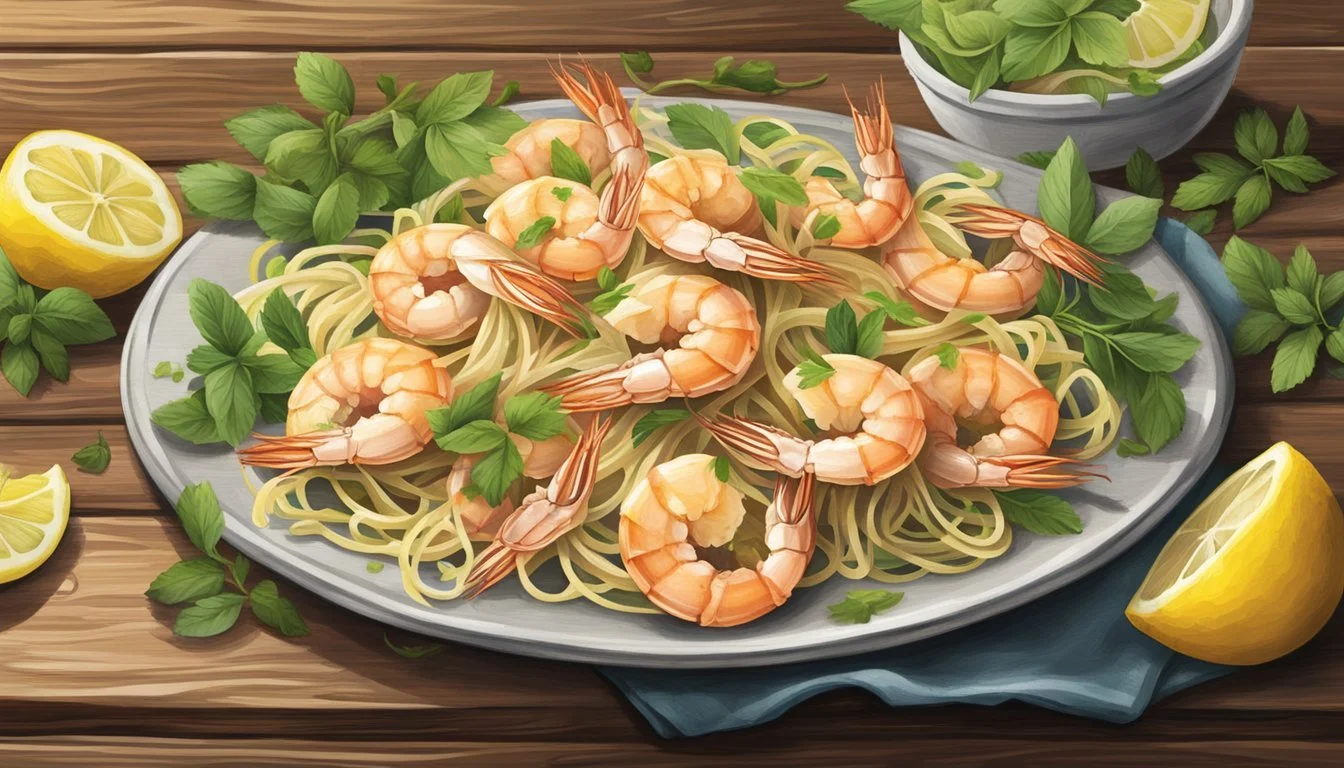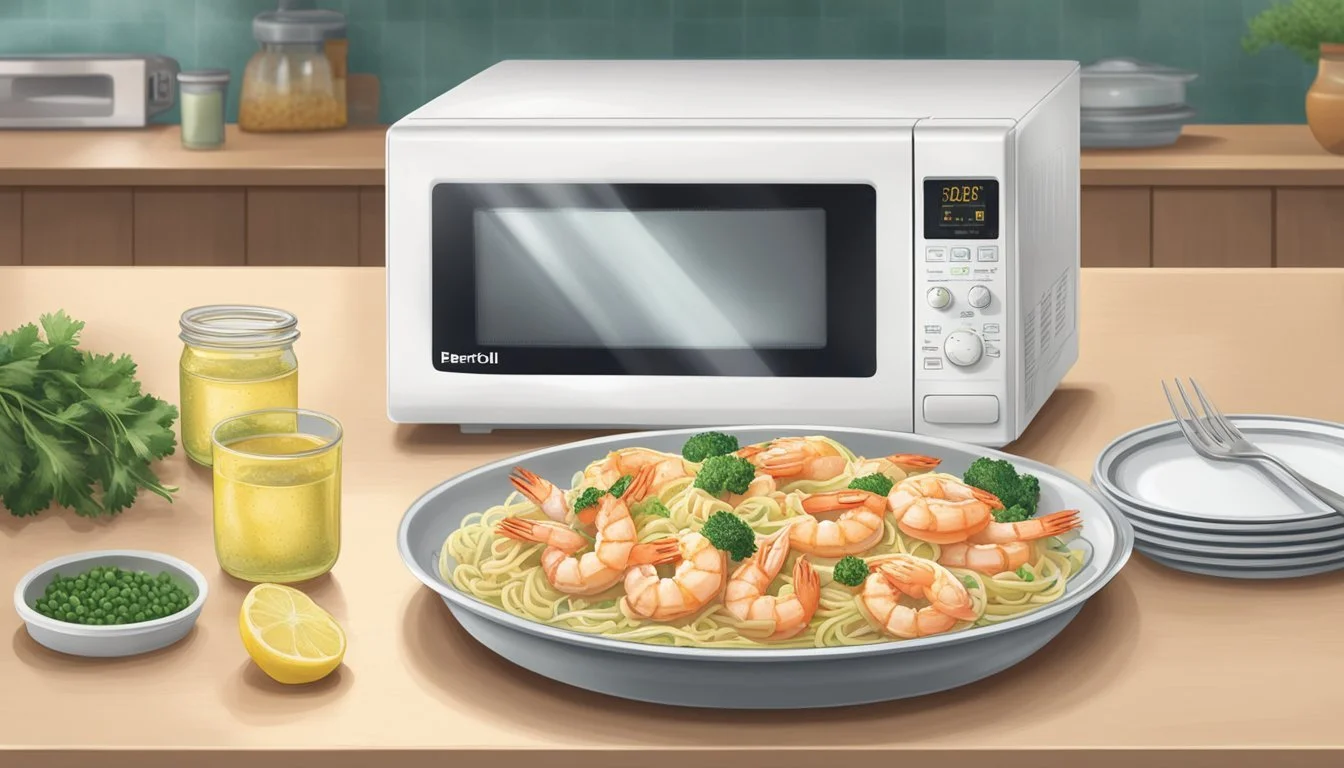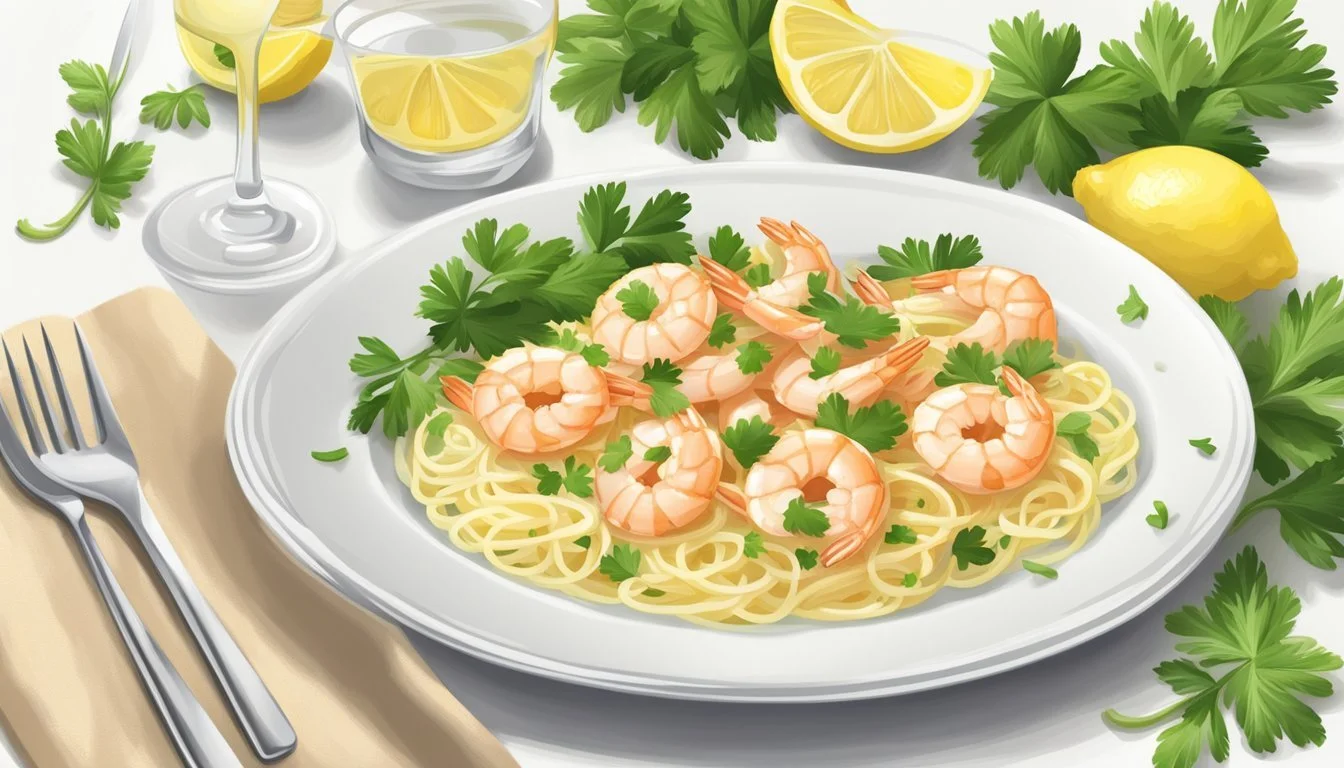How to Reheat Bertolli Shrimp Scampi
Step-by-Step Guide
Reheating Bertolli Shrimp Scampi can be a quick and easy task. Whether you're looking to use a microwave, stovetop, or oven, maintaining the dish's flavor and texture is key. The best method to reheat Bertolli Shrimp Scampi is by using the stovetop, which allows for even heating and prevents overcooking.
Using a skillet to reheat your shrimp scampi not only retains the dish's natural flavors but also ensures that the shrimp remain tender. By adding a small amount of olive oil or butter to the skillet and heating it over medium-low heat, you can rejuvenate your meal without compromising quality.
Alternatively, reheating in an oven or microwave also offers convenience, provided you monitor the dish to avoid overcooking. Each method has its benefits, ensuring your Bertolli Shrimp Scampi is ready to be enjoyed as if freshly cooked.
Understanding Shrimp Scampi
Shrimp scampi is a popular dish characterized by its rich and flavorful sauce. It combines fresh shrimp with ingredients like butter, garlic, and lemon juice, often enhanced by white wine and parsley.
Defining Shrimp Scampi
Shrimp scampi is an Italian-American dish known for its bright, garlicky flavor. Traditionally, it features fresh shrimp sautéed in butter and olive oil with garlic. The lemon juice and white wine add acidity, balancing the richness of the butter.
This dish usually includes herbs like parsley for a fresh, aromatic element. Originally, "scampi" referred to a type of crustacean, but in the U.S., it has come to signify shrimp prepared in this distinctive way.
Key Ingredients in Shrimp Scampi
Shrimp: Fresh or frozen, deveined, and preferably large shrimp are used.
Butter and Olive Oil: A combination that offers both richness and a subtle olive flavor.
Garlic: Minced or finely chopped, it provides the primary aromatic component.
Lemon Juice: Adds brightness and acidity, cutting through the richness.
White Wine: Enhances the dish’s depth with a slight tang.
Parsley: Typically added at the end as a garnish, it contributes a fresh, herbal taste.
These ingredients work together to create a flavorful, well-balanced sauce that coats the shrimp perfectly, ensuring an unforgettable dish.
Storing and Preserving Shrimp Scampi
Proper storage of shrimp scampi ensures it remains safe to eat, retains its flavor, and maintains texture. Here’s how to store shrimp scampi in the refrigerator or freezer effectively and correctly.
Storing Leftovers in the Refrigerator
To store shrimp scampi in the refrigerator, allow it to cool to room temperature first. Place the shrimp scampi in an airtight container to keep it fresh and prevent odors from affecting other foods. Store it in the refrigerator, where it can last up to 3 days.
It's important to write the storage date on the container. Ensure the refrigerator is kept at a temperature of 40°F (4°C) or lower. Reheat only the portion needed to avoid repeated cooling and reheating, which can degrade the dish's quality.
Freezing and Thawing Shrimp Scampi
If you need to store shrimp scampi for a longer period, freezing is a good option. Put the cooled shrimp scampi in an airtight, freezer-safe container or zip-top bag, and remove as much air as possible. Label with the freezing date. Shrimp scampi can be frozen for up to 3 months.
When ready to eat, thaw frozen shrimp scampi overnight in the refrigerator. Do not thaw at room temperature to avoid bacterial growth. For quicker thawing, use the defrost setting on the microwave but ensure it heats evenly to maintain texture and flavor. Once thawed, reheat as needed using your preferred method.
Preparation Before Reheating
Proper preparation before reheating ensures that your Bertolli Shrimp Scampi retains its delicious flavors and textures. Following these steps helps to achieve even reheating and prevents overcooking.
Bringing Leftovers to Room Temperature
Allowing your shrimp scampi to reach room temperature aids in achieving an even reheating process. Remove the dish from the refrigerator at least 15-20 minutes before reheating.
By doing this, you reduce the risk of uneven heating, where some parts might be too hot while others remain cold. This step is particularly crucial when using methods like the oven or stovetop, as it helps maintain the dish's internal temperature more efficiently.
Preheating Your Reheating Device
Preheating the device you intend to use ensures consistent results. For oven reheating, set the temperature to 350°F (175°C) and let it come to temperature before placing the shrimp scampi inside.
If using a stovetop, heat the pan over medium heat before adding the shrimp. For microwave reheating, ensure your microwave settings are adjusted correctly, typically medium power. Preheating leads to more controlled cooking, helping to keep the shrimp succulent and the pasta perfectly textured.
Following these preparatory steps can make a significant difference in the quality of your reheated Bertolli Shrimp Scampi.
Reheating Shrimp Scampi
Reheating shrimp scampi properly requires attention to the method used to ensure that the dish remains flavorful and moist. Here are key techniques and steps to effectively reheat shrimp scampi using different methods.
Oven Method for Reheating
To reheat shrimp scampi in the oven, preheat the oven to 350°F (175°C). Use an oven-safe dish or a baking sheet. Arrange the shrimp scampi in a single layer to ensure even reheating.
Cover the dish or baking sheet with aluminum foil to retain moisture and prevent the shrimp from drying. Heat for 10-15 minutes, checking periodically to avoid overcooking. Once the shrimp scampi reaches an internal temperature of 165°F (74°C), it is ready to serve.
Stovetop Method for Reheating
For the stovetop method, use a non-stick skillet or frying pan. Add a small amount of olive oil or butter to the pan and heat over medium-low heat. Place the shrimp scampi in the skillet, spreading it evenly.
Cover the pan with a lid to trap heat and promote even reheating. Stir occasionally to prevent sticking and ensure uniform temperature. Reheat for about 5-7 minutes, making sure the internal temperature reaches 165°F (74°C) before serving. If necessary, add a splash of broth to maintain moisture.
Microwave Method for Reheating
Using the microwave method, place the shrimp scampi in a microwave-safe dish. Cover with a microwave-safe lid or plastic wrap to trap steam and keep the shrimp moist.
Heat on medium power for 1-2 minutes, checking frequently to avoid overcooking. Stir the shrimp scampi halfway through to ensure even heating. If needed, heat in additional 30-second intervals until the internal temperature of 165°F (74°C) is reached.
Maintaining Quality and Flavor
Reheating Bertolli Shrimp Scampi can be delicate. Key elements include managing heat to avoid overcooking, ensuring doneness, and maintaining moisture and flavor.
Avoiding Overheating
Overheating can cause shrimp to become tough and rubbery. Preheat the oven to 350°F, arrange the shrimp scampi in a single layer, and cover with foil to maintain moisture. Heat for around 10-15 minutes, checking periodically.
Alternatively, use a stove. Heat a small amount of olive oil or butter in a skillet over medium heat. Reheat the shrimp scampi for approximately 5-7 minutes. Constant stirring will prevent sticking.
Microwaving is another option. Place the dish in a microwave-safe container, cover with cling wrap or a damp paper towel, and heat on medium power for 1-2 minutes.
Checking for Doneness
Ensuring the shrimp is thoroughly heated without overcooking is key. Use a food thermometer to check that the shrimp scampi reaches an internal temperature of at least 165°F (74°C).
Visually inspect the shrimp for an opaque color and a firm texture. Preserve tenderness by avoiding prolonged heating. Stirring occasionally during reheating helps achieve uniform doneness.
A sign of doneness is when the flavors seem revived, and the shrimp is flavorful and tender. Checking frequently ensures you catch the shrimp at its optimal point.
Adding Moisture and Flavor
Adding a bit of extra sauce or liquid can go a long way in retaining or enhancing moisture and flavor while reheating. Incorporating a small splash of Pinot Grigio or chicken broth into the dish can keep it moist and infuse it with a flavorful boost.
Cover the skillet or baking sheet with foil if reheating in the oven to trap steam. If using a microwave, a damp paper towel or microwave-safe lid will prevent drying out.
Stir in fresh herbs or a squeeze of lemon before serving to refresh the dish and enhance its flavors. This makes the shrimp scampi taste vibrant even after reheating.
Serving and Presentation
When it comes to serving Bertolli Shrimp Scampi, presentation and accompanying dishes can elevate the dining experience. Consider integrating complementary elements such as pasta and fresh vegetables to enhance flavors and visual appeal.
Accompaniments and Pairings
Pasta is a classic choice to serve alongside shrimp scampi. Options like linguine or spaghetti are particularly suitable for absorbing the rich garlic and butter sauce. They also provide a pleasing texture contrast to the shrimp.
Fresh vegetables play a key role in rounding out the dish. Steamed broccoli, sautéed spinach, or a medley of roasted bell peppers not only add vibrant colors but also balance the richness of the scampi.
For added freshness, a lemon wedge on the side can brighten the flavors when squeezed over the shrimp and pasta. Ensuring the shrimp tails are either removed or neatly presented aids in an elegant and easy-to-eat meal.
Wine pairings can also enhance the experience. A crisp white wine like Sauvignon Blanc or Pinot Grigio complements the garlicky, buttery notes of the scampi. If alcohol isn't preferred, a sparkling water with a slice of lemon provides a refreshing alternative.
Using garnishes like chopped parsley or a sprinkle of parmesan cheese adds a visually appealing and flavorful touch to the presentation.
Tips and Tricks for Best Results
When reheating Bertolli Shrimp Scampi, maintaining the right textures and preventing contamination are crucial.
Covering the Dish During Reheating
Covering the dish while reheating helps retain moisture and ensures even heating. Use aluminum foil in the oven or a microwave-safe lid in the microwave.
For stovetop reheating, placing a frying pan lid over the skillet works well.
Covering the dish also helps maintain the shrimp's crispness and prevents it from drying out.
If using a microwave, ensure the cover traps steam but doesn't touch the shrimp, as this can impact the flavor and texture. Occasionally, stirring the shrimp with tongs can help distribute the heat evenly.
Avoiding Cross-Contamination
Always use clean utensils and surfaces when handling shrimp to prevent cross-contamination. Never reheat the shrimp in a container that previously held raw seafood.
Store leftover scampi in an airtight container and refrigerate promptly.
When reheating, ensure the internal temperature reaches at least 165°F (74°C) to kill any bacteria. Use a food thermometer to check this.
Avoid using the same tongs for both raw and reheated shrimp unless they've been thoroughly washed.
Also, remember to wash your hands before and after handling the shrimp to keep everything sanitary.
Alternative Reheating Methods
Using different kitchen appliances to reheat Bertolli Shrimp Scampi can help retain its flavors and texture. These methods can help you achieve perfectly reheated, juicy shrimp with minimal effort.
Using an Air Fryer
An air fryer is a versatile tool that can reheat shrimp scampi quickly and evenly. Preheat the air fryer to 320°F (160°C). Place the shrimp scampi in a single layer in the basket to ensure even cooking. Cover the shrimp with foil to retain moisture. Heat for about 5-6 minutes. Check the internal temperature using a food thermometer; it should reach 165°F (74°C). This method helps maintain the crispy texture of the original dish without drying it out.
Reheating on a Grill
To reheat shrimp scampi on a grill, preheat the grill to medium heat. Place the shrimp scampi on a sheet of aluminum foil, and fold the edges to create a pouch to trap steam and keep the shrimp juicy. Grill for 8-10 minutes, turning the pouch halfway through to ensure even heating. Check for an internal temperature of 165°F (74°C). This method adds a slight smoky flavor to the dish, enhancing the overall taste. Make sure not to overcook to avoid making the shrimp rubbery.








